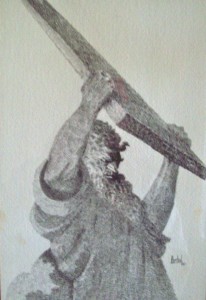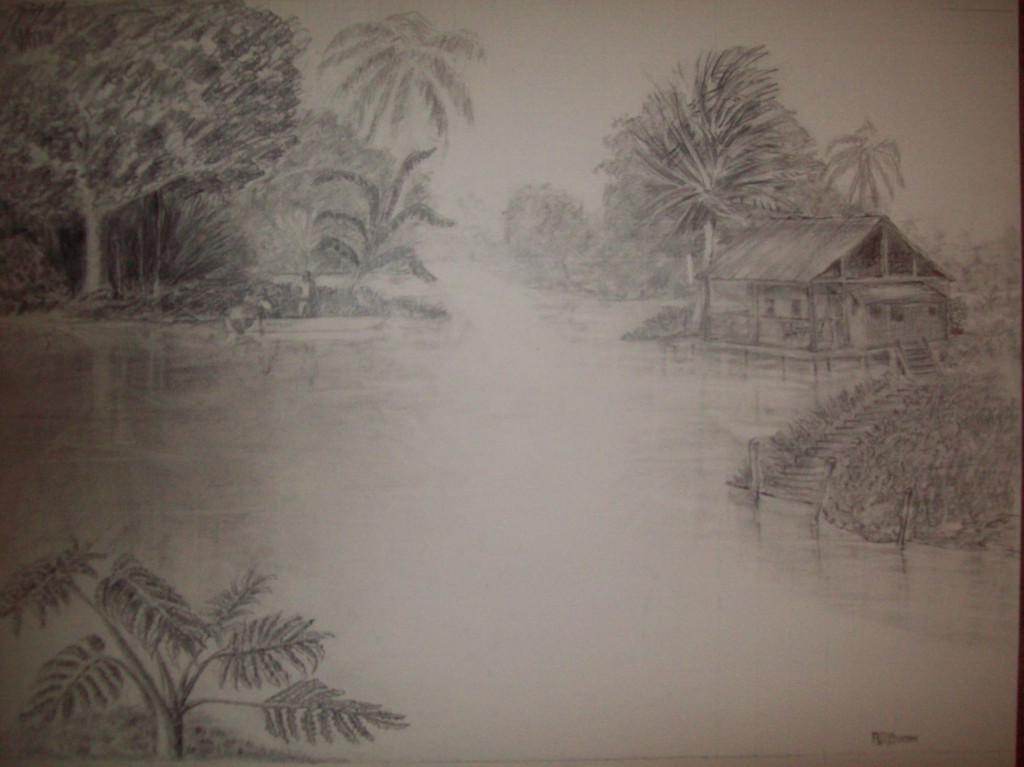With a simple kit of supplies–a piece of paper, some ink, and a pen–artists have produced an enormous amount of work. Illustrations for books, magazines, and newspapers have been full of finely rendered ink drawings. This was especially true during the eighteenth and early nineteenth centuries.
I’ve always been fascinated by the fresh, crisp, look of a well executed pen and ink. Artist who have mastered this type of art, whether using crosshatching strokes, dots, vertical or horizontal hatching, continuous line, curved strokes, or a combination of any of these, can feel a great sense of accomplishment. I can say from experience that it takes talent and patience to complete a picture worth showing, selling, or hanging on your own wall.

I drew the crosshatched pen and ink (depicted on the left) in 1980. It was the composition I chose as my very first attempt at this art technique.
The composition is not original. As many artist do when attempting a new style of art, they refer to the work of a master artist. In this case I referred to the work of the great painter and illustrator, Thomas B. Allen. However, the hundreds (or maybe thousands) of strokes of the fine point “crow quill” nib pen belong to me. I’ve never tried the pointillism (dots) method, but that would definitely be in the thousands. See what I mean about patience.
Review the Lynn Burton Gallery above and the others, as well. If your interested in any prints with art, just click on drawing below and it will send you to the Fine Art America sight, and write in Lynn Burton on the search section, and you will see some great offers.

